Yves GARY Hits: 8261
Category: AMERICA
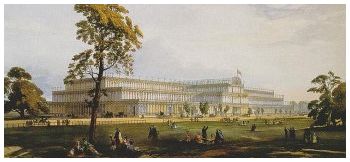 The origin of the project
The origin of the projectThe creation of the America was the result of a most happy combination of favorable circumstances. The idea of building such a yacht was the result of correspondence that took place in the autumn of 1850 between an English merchant and some New York business men regarding ...
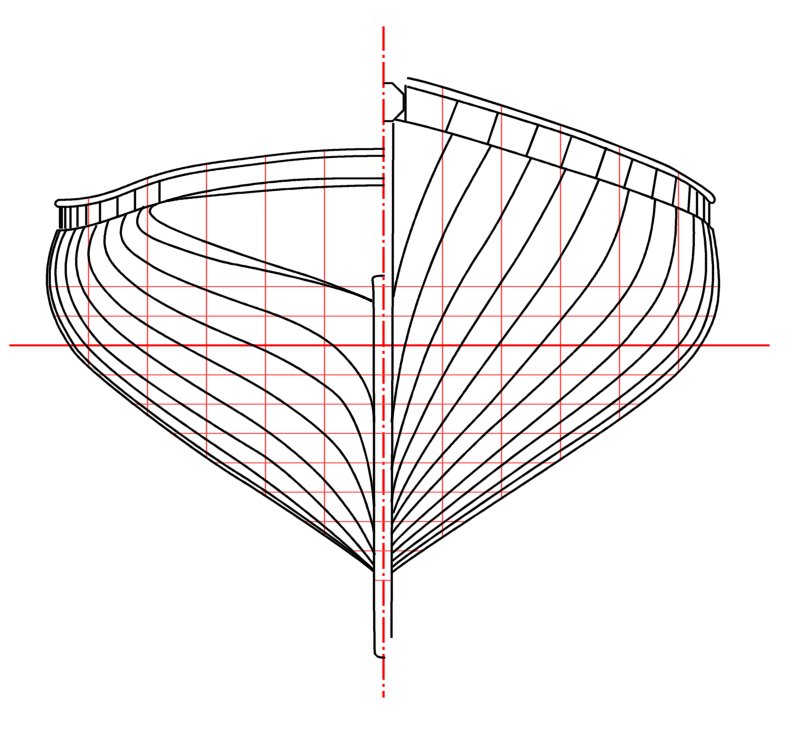 ... the forthcoming exhibition at London, the Englishman suggesting that one of the famous New York pilot-boats be sent over in the summer of 1851 to sail against the fast schooners of England in the regattas that were to be a feature of the exhibition celebration. The epistle containing this suggestion was shown to George L. Schuyler and John C. Stevens, then the foremost sportsmen in New York. This timely suggestion found these gentlemen prepared to go beyond the letter of the proposition, for they had the man at hand in George Steers, young, talented, and burning with the fire of ambition and the purpose that knows no such word as fail, ready to create for them a vessel that should be finer and faster than any pilot-boat, and in every sense a national champion.
... the forthcoming exhibition at London, the Englishman suggesting that one of the famous New York pilot-boats be sent over in the summer of 1851 to sail against the fast schooners of England in the regattas that were to be a feature of the exhibition celebration. The epistle containing this suggestion was shown to George L. Schuyler and John C. Stevens, then the foremost sportsmen in New York. This timely suggestion found these gentlemen prepared to go beyond the letter of the proposition, for they had the man at hand in George Steers, young, talented, and burning with the fire of ambition and the purpose that knows no such word as fail, ready to create for them a vessel that should be finer and faster than any pilot-boat, and in every sense a national champion.
Those agreeing this project were George L. Schuyler, John C. and Edwin A. Stevens, Col. James A. Hamilton, J. Beekman Finlay, and Hamilton Wilkes. Mr. Schuyler was the active representative of the associates in their dealings with Mr. Brown (I propose to build a vessel that should be faster than any craft of her size afloat), chiefly because he was in closer touch than the others with the builder in business matters, he being engaged in shipping
In a letter dated November 15, 1850 and addressed to George L. Schuyler, W. H. Brown proposes to build a yacht of not less than 140 tons in the best manner, coppered, rigged, equipped with joiner's work, cabin and kitchen furniture, table furniture, water closets, etc., etc., ready for sea, for the sum of $ 30,000.
Mr. Schuyler accepts on the day: 'The price is high, but in consideration of the liberal and sportsmanlike character of the whole offer, test of speed, etc., we have concluded that such a proposal must not be declined. I therefore accept the proposal, and you will please go ahead without loss of time. I only stipulate as a condition on my part that the yacht must be ready for trial on the first day of April next.'
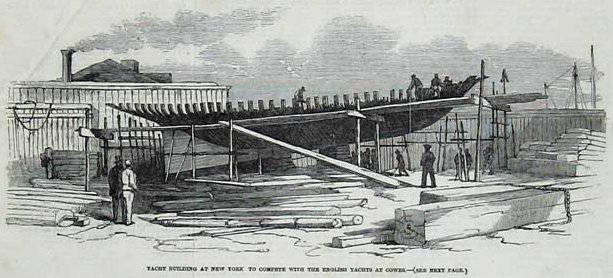 Timeout problems
Timeout problemsWork on the America did not progress as rapidly as the owners and builders had hoped it would, and the vessel was not ready for trial, or even for launching, on the day set in the agreement for her delivery, April 1st. Mr. Brown therefore requested an extension of the contract. On 2 April, Mr. Schuyler sets a new deadline of May 1, provided that the crossings to England and testing are the responsibility and risk of the builder.
Mr. Brown accepted the amended conditions, but was unable to deliver the vessel at the stipulated time, though she was launched on the 3d of May. Mr. Schuyler on the 24th of May made a proposal: "I will give you $20,000 in cash for the yacht, finished as per contract, equipped and ready for sea, to be delivered to me on or before the second day of June next. All expenses of trials, etc., heretofore incurred by you to be paid by you."
On the 17th of June the America's certificate of registry was issued at the New York custom-house. It was as follows:
« Register 290, June 17th, 1851: William H. Brown, master, builder and sole owner of the yacht schooner America.
Built in New York in 1851. Length 93 feet six inches, breadth 22 feet six inches, depth 9 feet,
measurement 170, 50-95ths tons ».
The America was delivered to her owners next day, w-as ready for sea on June 20th, and sailed the next morning for Havre. She carried but six men before the mast. Capt. ' Dick" Brown, a Sandy Hook pilot, part owner of the Mary Taylor, was sailingmaster, and Nelson Comstock mate. Messrs. George Steers, James R. Steers, and young Henry Steers, the latter's son, aged 15, went as passengers, and helped on occasion to work ship or stand watch. The total ship's company, with cook and boy, numbered thirteen.
Much interest was manifested by New York merchants and seamen in the America, which was the finest schooner they had ever seen. The following description of the vessel appeared in the Spirit of the Times shortly before her departure for England:
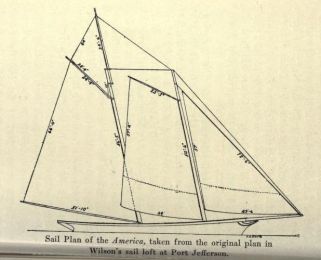
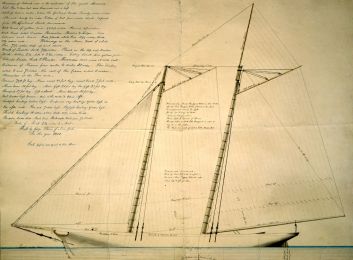 An English description of the America stated that « Her saloons are finished in carved rosewood, polished rosewood, polished American walnut, and green silk velvet. ».
An English description of the America stated that « Her saloons are finished in carved rosewood, polished rosewood, polished American walnut, and green silk velvet. ».
Racing sails were made for the America by R. H. Wilson of New York. Her three lower sails had a spread of 5263 feet.
A draft of her sail plan, from the original of the sail-maker, is presented here.
